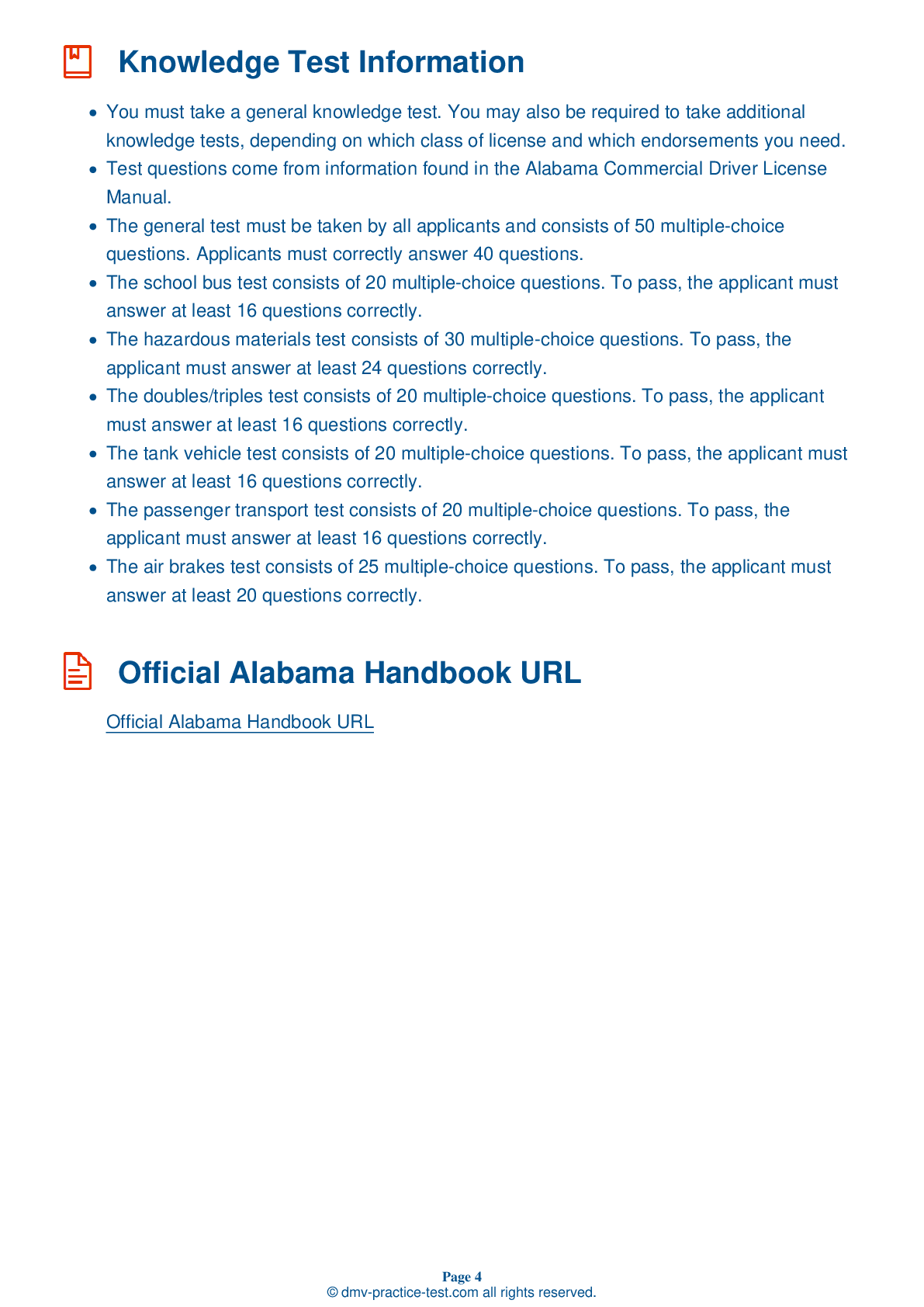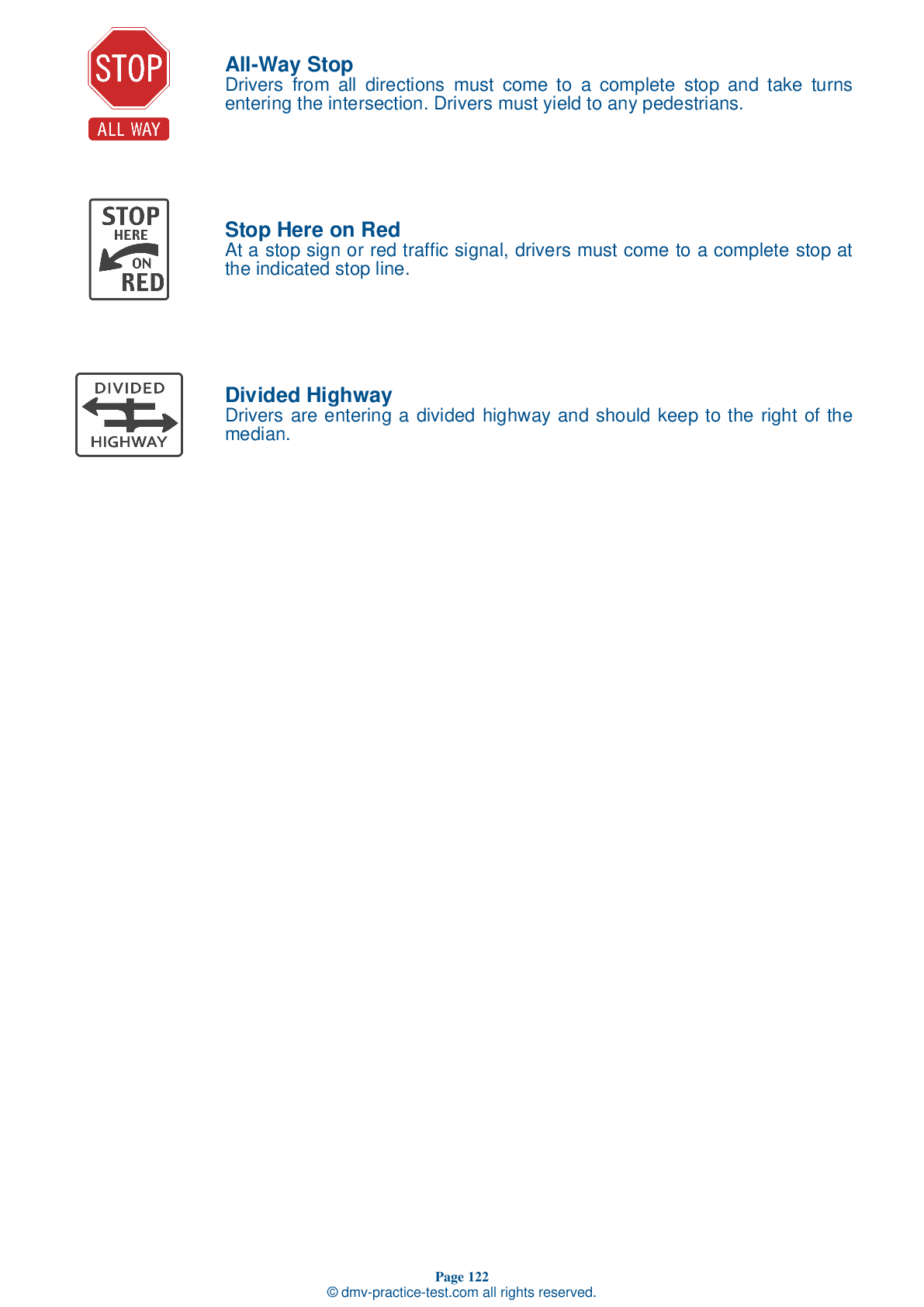Knowledge Test Class B #1
Class B Driving Test | Alabama 2025 #1 Page 7 of 7
Train for FREE online with our Alabama class B license test. The official exam test consists of several obligatory parts, with all of them checking your knowledge of different blocks of road rules. If you need to obtain a AL CDL class B permit in 2025, practice as much as possible. Free sample tests published on our website will help you check and improve your knowledge and boost your grades. Please bear in mind that CDL class B requirements may vary from state to state.
50
40
20
43 . During an applied leakage test, the maximum leakage rate for a single vehicle with air brakes is:
4 psi in one minute.
It is important to know the maximum air loss rate that is safe for your specific vehicle. A single vehicle with air brakes should have a leakage rate no higher than 3 psi in a minute during an applied leakage test.
44 . When starting a vehicle, the coolant temperature gauge should:
Flash until it reaches the normal operating range.
Keep an eye on the gauges after starting the engine. The coolant temperature gauge should begin a gradual rise to the normal operating range.
45 . Front brake limiting valves were intended to:
Remove uncertainty when applying the brakes.
Some older vehicles with air brakes have front brake limiting valves. These valves were intended to reduce the risk of front wheels skidding. However, research has shown that such devices are unnecessary, so they should be left in the "normal" position.
46 . ____ is a thin layer of ice that forms on road surfaces.
Sharp ice
Black ice is a thin layer of ice that is clear enough for the road surface to be seen through it. A road covered in black ice may look like it is merely wet. You should be very careful when temperatures are below freezing and the road looks wet.
47 . When changing lanes, you should not:
Always signal and check your mirrors when turning and changing lanes.
48 . If the safety relief valve in the air brake system releases air:
An air brake system has a safety relief valve, which releases air from the tanks if the pressure gets too high. If the valve must operate, something in the system is wrong and should be addressed by a mechanic.
49 . When driving at night, you should do all of the following, except:
To ensure that you can see as well as possible, don't wear sunglasses when driving at night. If you wear eyeglasses, make sure they are clean and unscratched. Make sure you are rested and alert before driving at night.
50 . If you identify a distracted driver on the road, you should:
Flash your lights at them.



